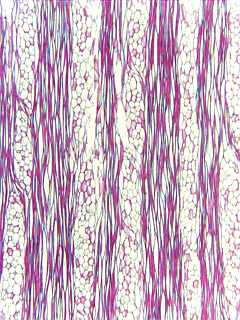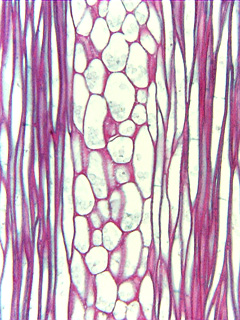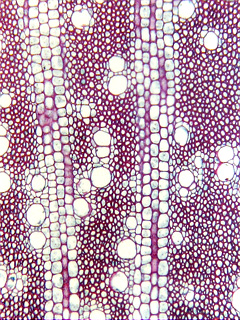

Fig.
15.3-8a – c. Tangential and transverse sections of a climbing,
vine-like cactus (Acanthocereus columbianus). The low magnification
tangential section shows that a very high percentage of the volume of this wood
is composed of ray cells: this
cactus is able to store a large amount of water directly in the wood, close to
its vessels. But the high magnification tangential section shows that
these ray cells have stained red – they are lignified. This is another of the
problems with terminology for wood cells: these are isodiametric cells with
thick (but not very thick) lignified secondary walls, so it seems like they
should be called sclereids. But their walls are so thin they really have the
look of being parenchyma cells, and they remain alive, storing water and starch
– something that sclereids do not typically do. We just avoid the terminology
problem by using adjectives: these are sclerified ray cells.